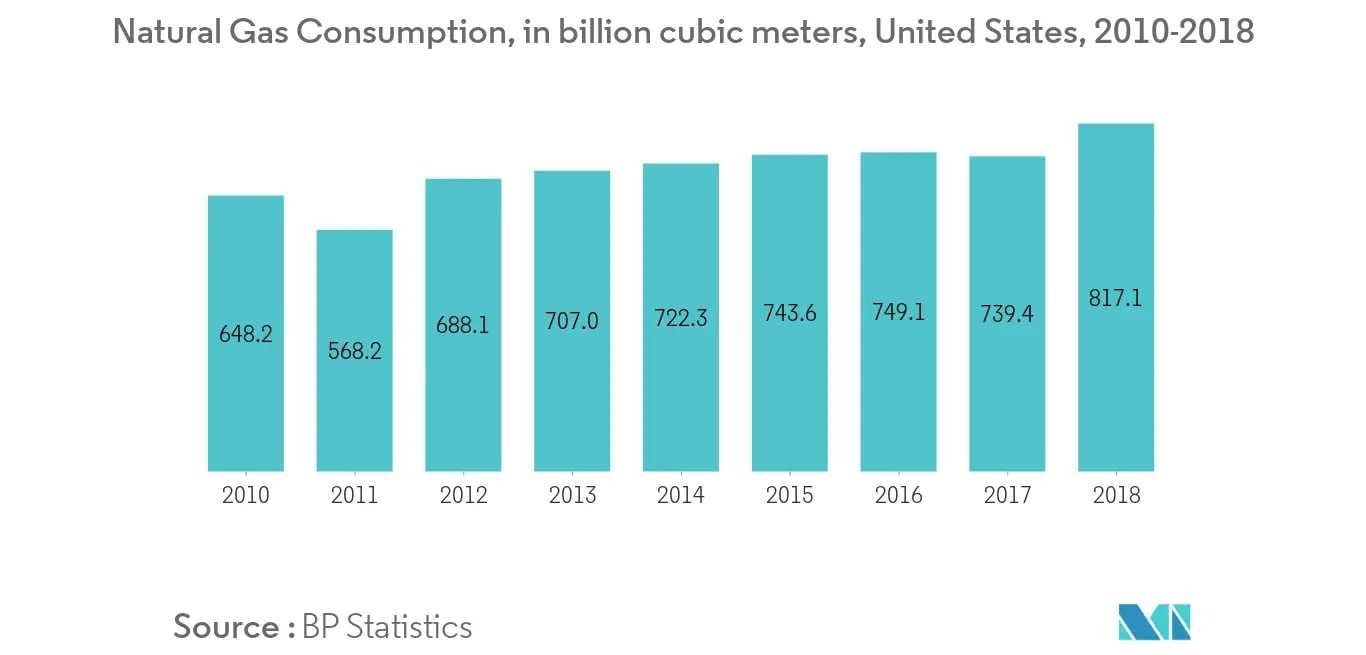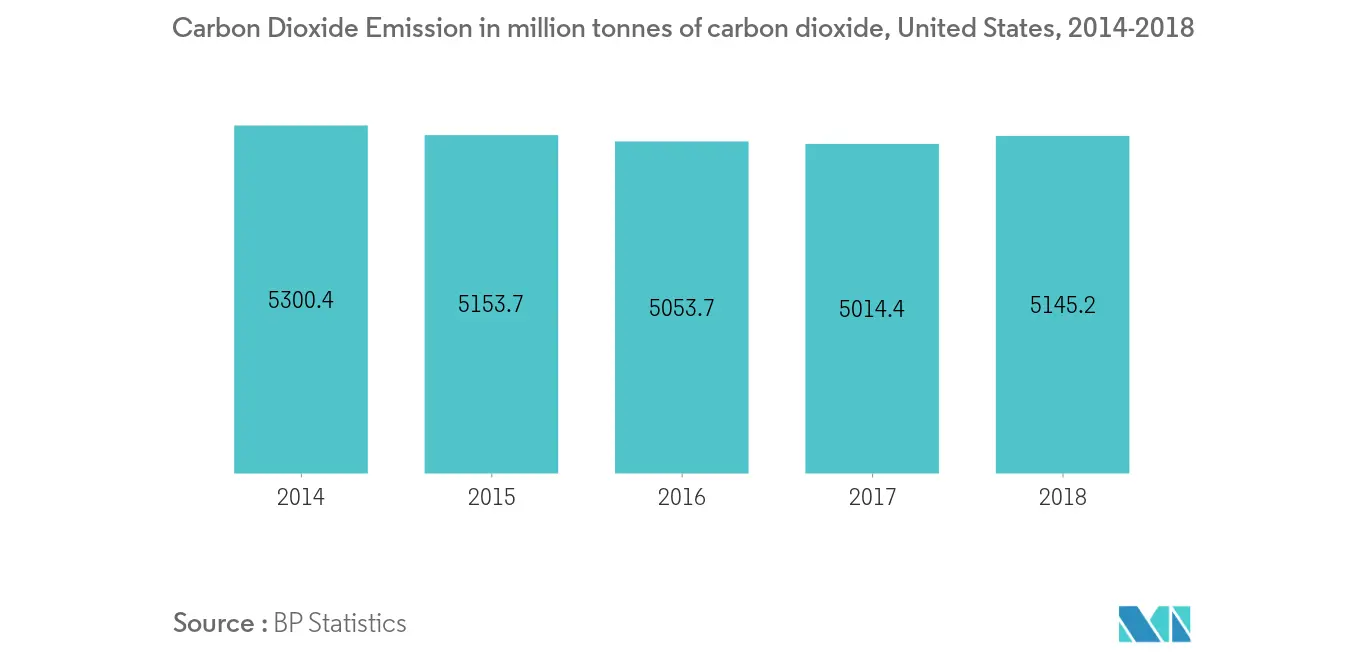Market Trends of US Combined Heat and Power (CHP) Industry
This section covers the major market trends shaping the US Combined Heat & Power Market according to our research experts:
Natural Gas-based CHP is Expected to Dominate the Market
- Over the past few years, the natural gas industry has grown significantly. Combined Heat and Power (CHP) or cogeneration, which is the generation of electricity or mechanical power and useful thermal energy from a single source of energy at the point of use, provides a number of potential benefits for the United States in terms of increased energy efficiency, lower greenhouse gas and other emissions, economic competitiveness, and energy resiliency. Approximately 70% of the existing CHP capacity in the United States is fueled by natural gas, resulting in approximately 4.5 trillion cubic feet (Tcf) of annual consumption, accounting for approximately 18% of annual natural gas demand.
- CHP's high-efficiency results in less fuel use and lower levels of greenhouse gas emissions. CHP in the United States avoids more than 1.9 Quadrillion Btus of fuel consumption and 248 million metric tons of CO2 emissions when compared to traditional separate production of electricity and heat. This CO2 reduction is the equivalent of removing more than 45 million cars from the road.
- Around 87% of the country's CHP capacity is found in industrial applications, providing power and steam to large industries such as chemicals, paper, refining, food processing, and metals manufacturing. CHP in commercial and institutional applications is 13% of existing capacity, providing power, heating, and cooling to hospitals, schools, campuses, nursing homes, hotels, and office and apartment complexes.
- CHP is a commercially available clean energy solution that directly addresses a number of national priorities including improving the competitiveness of the United States manufacturing, increasing energy efficiency, reducing emissions, enhancing energy infrastructure, improving energy security and growing the economy.

Federal and State Policies to Support the Growth of the Market
- Policymakers at the federal and state level are increasingly recognizing the benefits that CHP offers in terms of energy efficiency, reduced emissions, and economic growth.
- CHP's inherent higher efficiency and elimination of transmission and distribution losses from the central station generator results in reduced primary energy use and lower greenhouse gas (GHG) emissions.
- CHP provides not only operating savings for the user but may also represent a cost-effective supply of new power generation capacity for regions with declining reserve margins.

